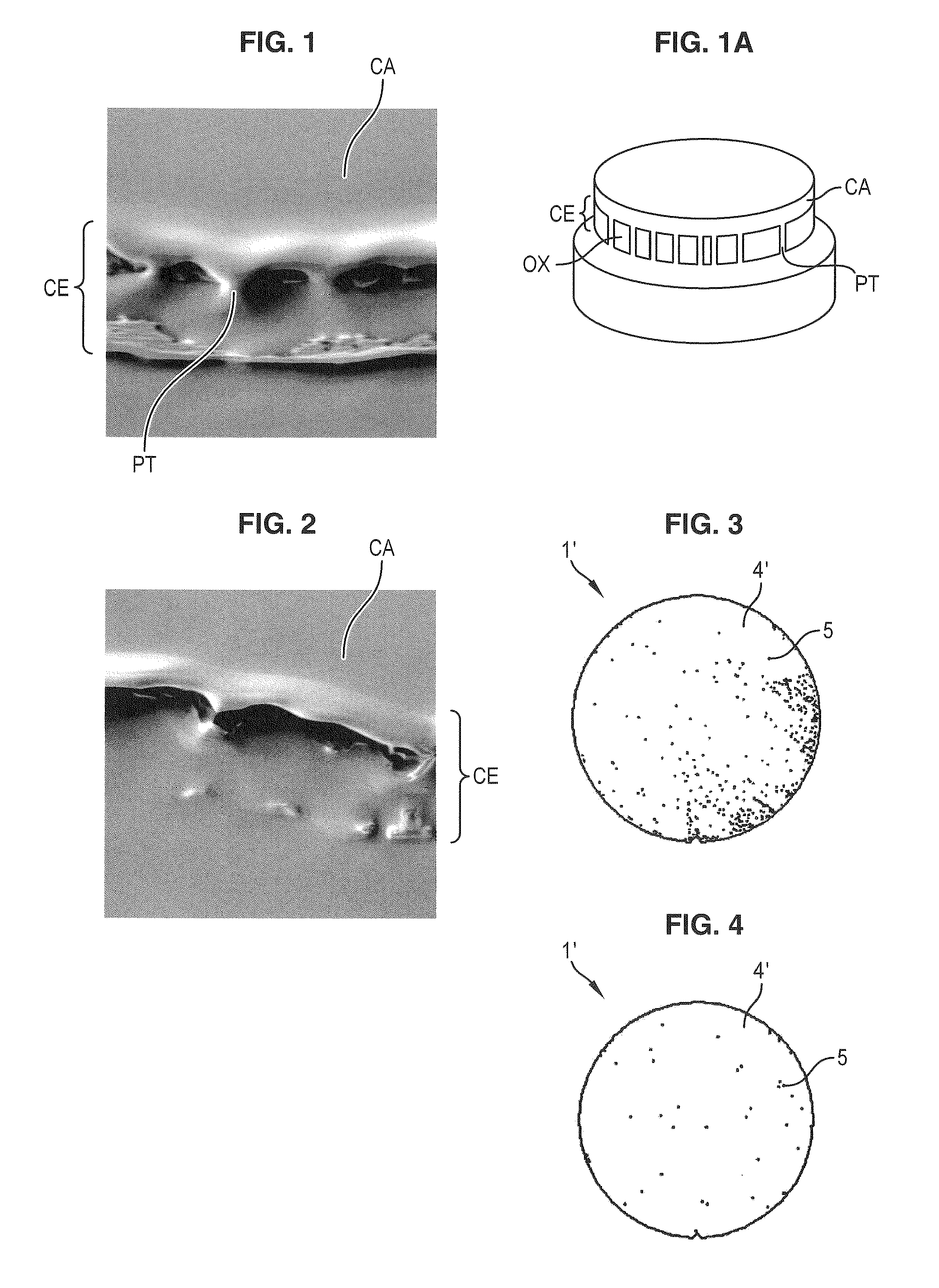Method to thin a silicon-on-insulator substrate
- Summary
- Abstract
- Description
- Claims
- Application Information
AI Technical Summary
Benefits of technology
Problems solved by technology
Method used
Image
Examples
Embodiment Construction
[0042]The method according to the invention will now be described.
[0043]FIG. 5A illustrates a SOI substrate 1 comprising a carrier substrate 2 in silicon, coated with a layer 3 of silicon oxide SiO2 and a surface layer 4 in silicon.
[0044]The oxide layer 3 is therefore buried between the two layers 2 and 4. Preferably, the thickness of the silicon surface layer is 400 nm or less.
[0045]This SOI substrate may have been obtained, for example, using a layer transfer process using the following chief steps:[0046]creating a weakened region in the thickness of a donor substrate;[0047]forming an oxide layer on the donor substrate (preferably before creating the weakened region), or on a receiver substrate;[0048]bonding the donor substrate and receiver substrate; and[0049]detaching along the weakened region. An example of the transfer process is the SMARTCUT® process of which a description can be found in the work: “Silicon On Insulator Technology:Materials to VLSI, 2nd Edition” by Jean-Pierr...
PUM
| Property | Measurement | Unit |
|---|---|---|
| Temperature | aaaaa | aaaaa |
| Temperature | aaaaa | aaaaa |
| Temperature | aaaaa | aaaaa |
Abstract
Description
Claims
Application Information
 Login to View More
Login to View More - R&D
- Intellectual Property
- Life Sciences
- Materials
- Tech Scout
- Unparalleled Data Quality
- Higher Quality Content
- 60% Fewer Hallucinations
Browse by: Latest US Patents, China's latest patents, Technical Efficacy Thesaurus, Application Domain, Technology Topic, Popular Technical Reports.
© 2025 PatSnap. All rights reserved.Legal|Privacy policy|Modern Slavery Act Transparency Statement|Sitemap|About US| Contact US: help@patsnap.com



